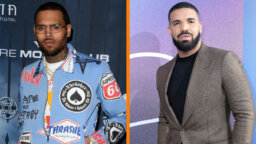UK-based songwriter ad publisher collection society PRS has signed a new licensing deal with YouTube that will see thousands of music videos return to the service.
YouTube had claimed that PRS were demanding exorbitant tarrif terms, while PRS countered that YouTube was deliberately hurting British songwriters by offering measly payouts.
It’s being reported that the new deal involves a lump sum payout to PRS – similar to an advance – in addition to royalty payments.
Patrick Walker, YouTube’s director of video partnerships, said: “This deal provides a positive example that people can come together with the objective of satisfying user demands. It is a very fast-moving area and we need to make sure we don’t retrench but remain flexible so that everyone can benefit.”
Andrew Shaw, the managing director of broadcast and online at PRS, said: “We hope this is the first of many deals with other services so that music can get out there in whatever way people want to listen to it, while making sure our members get paid,” he said.
PRS has offered an FAQ for songwriter and publisher members, which you can read below.
When are the first YouTube royalties being distributed?
The first YouTube royalties will be paid in April 2010.
When was the deal with YouTube signed?
PRS for Music became the first collecting society outside the US to sign a deal with YouTube in August 2007. This deal terminated at the end of 2008, and this new PRS for Music deal was signed in September 2009 following a lengthy re-negotiation.
Which territories does the YouTube deal cover?
The deal covers musical works streamed to users in the UK.
What period does the new deal cover?
1 January 2009 to 30 June 2012.
How much money does YouTube pay PRS for Music for the use of music on their service?
The deal is subject to a confidentiality agreement (similar to the last deal) which means that we are not able to disclose full terms of the deal. We recognise that this is not ideal and this is not something that PRS for Music feels particularly comfortable about given its desire to be as transparent as possible with its members, however it was necessary for us to agree to these provisions in order to secure the deal. Members do however have the assurance that the deal was subject to discussion by and the approval of the Boards and that any subsequent distribution policy will be approved by the Boards and any relevant Board sub committees through the normal processes.
When are the first YouTube royalties being distributed?
We are currently evaluating whether the various deadlines for receipt of data and its subsequent processing mean that the first distribution can be made in December, or whether it will need to be held in April 2010. The final decision will be made after the November Board meeting. Our objective is to ensure that the monies are paid to members as soon as is practicable.
What period does the first royalty distribution cover?
This is yet to be decided and will depend upon whether the deadlines can be met for achieving a distribution in December 2009 or whether this needs to take place in April 2010. We will inform members when the decision has been made, i.e. at the end of November.
How often will YouTube royalties be distributed in future?
We are planning to return to a quarterly distribution cycle in 2010.
How does PRS for Music know what’s been played on YouTube?
YouTube will continue to provide information to PRS for Music in formats that have been agreed between the two organisations and PRS for Music and YouTube are working closely together to improve the matching of YouTube data with PRS for Music’s database and the quality of data going forward. For example, YouTube use ‘finger-printing’ technology to help identify which videos on their service match the content supplied directly to them by record labels and other content owners.
What is the process being used to pay out YouTube royalties?
We have developed a distribution system which we believe is fair and accurate given the constraints on the data. In the first stage of the process, the data reported by YouTube is automatched against PRS for Music’s systems. Following that, PRS for Music will then manually match as much members’ music as possible in other videos, up to the point where manual-matching stops being cost-effective.
What is auto-matching?
Auto matching is a process where PRS for Music systems compare the data sent by the licensee to the data stored in the PRS for Music’s databases. If the data is similar enough our systems automatically link the two in order to pay a royalty. This obviously depends on good quality data to enable the match. Because of the user uploaded nature of the majority of YouTube content, the quality of information available is often not as high as data received from traditional broadcast sources.
How is data manually matched?
Manually matching data involves PRS for Music staff analysing the data reported by YouTube in order to link it to the works registered by our members. In some instances, it may also involve viewing individual YouTube videos in order to determine if they contain members’ music, and then to identify and match the music to our database.
This is obviously a time-consuming and expensive process. And additionally, because of the user uploaded nature of YouTube content, manually matching music within viewed videos can still present difficulties. It is not always obvious what music has been included.
How much will songwriters, composers and publishers be paid for the use of music on YouTube?
YouTube is unlike TV broadcasts, where a single ‘play’ reaches potentially millions of viewers: each video is potentially only watched by one viewer and the pot of money will have to be divided across these many views.
So, for example, a work that has been viewed 5 million times on YouTube may well have been viewed the same number of times as just one usage on prime time terrestrial TV.
This means that YouTube videos will generate ‘micro-payments’ in royalties and it will therefore take many of these micro-payments (ie streamed works) to equal £1.
Will members be paid for every performance of their work on YouTube?
No. Given the vast volumes of videos on the service, many with little or no music related metadata attached to them, clearly identifying the full extent of music usage on the service is both a challenge for Google and then subsequently for PRS for Music. Both parties have agreed to work together to improve the quality of this data and its reporting going forward.
Do works have to be registered with PRS for Music in order to receive a royalty payment from YouTube?
Yes, as in all other cases, works can only be paid if PRS for Music has been notified of their existence and they appear on our database. Works can be registered easily online
What if a work is used in a derogatory way?
The usual derogatory exclusions will apply. If PRS for Music becomes aware that a members’ work fits the definition of derogatory use, PRS for Music can notify YouTube on that members’ behalf and work with YouTube to remove that content. Under the Joint Online Licence, a derogatory use is defined as a parodied work, or one that is insulting or detrimental to the composer of the commercially released sound recording.
Do royalties include payments for the synchronisation right as well as for the performing and mechanical right?
The licence includes synchronisation rights where they are required. Your performing right royalties will be shown on your PRS statements and your MCPS statement will show a total figure per track which includes the payment for all aspects of the mechanical right.
Are library works included in the deal?
Yes, library works are included alongside commercial recordings and will be paid out wherever we are able to match them.Music Business Worldwide




